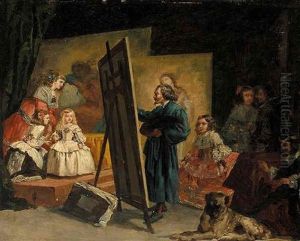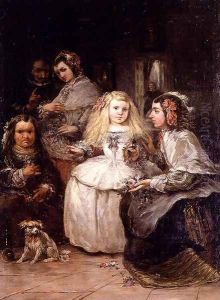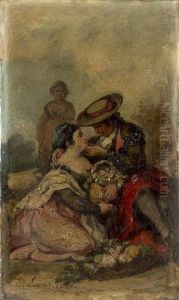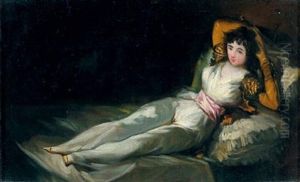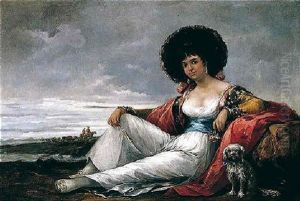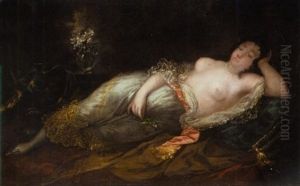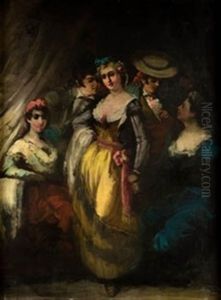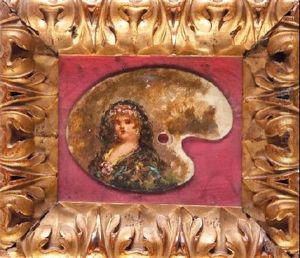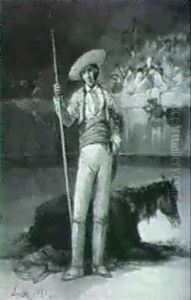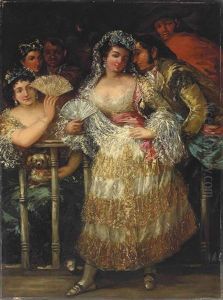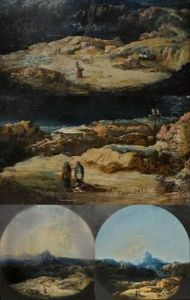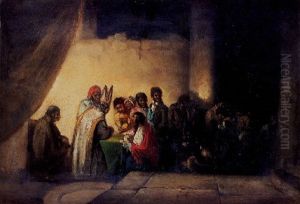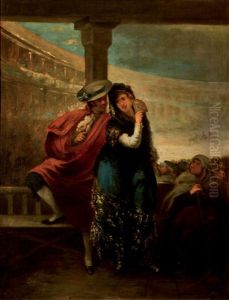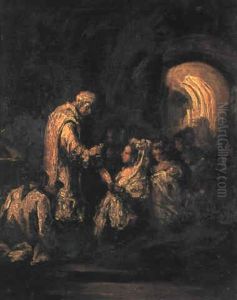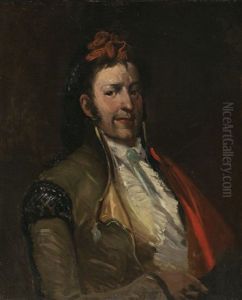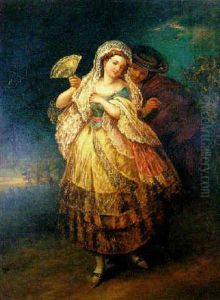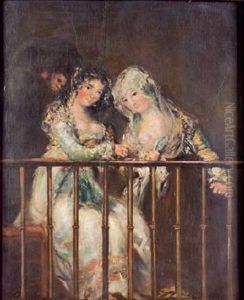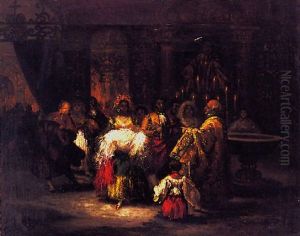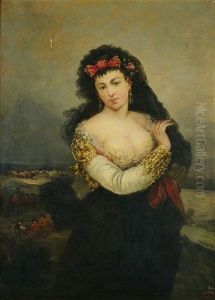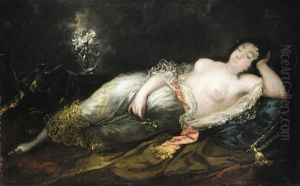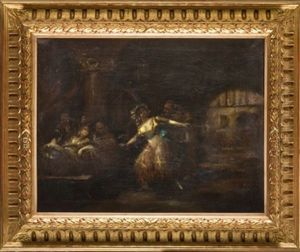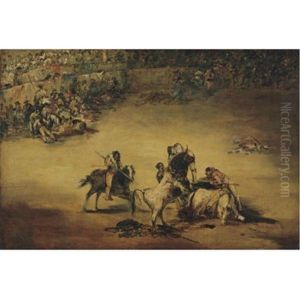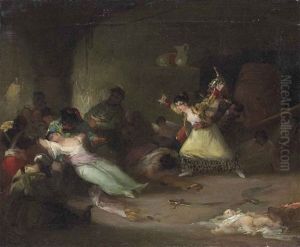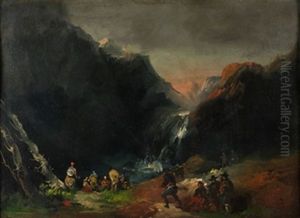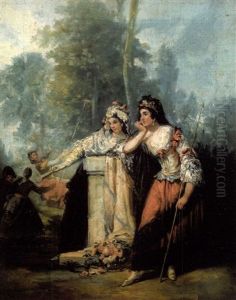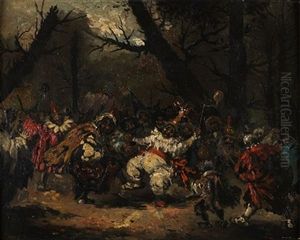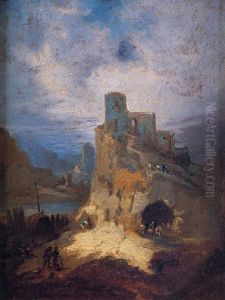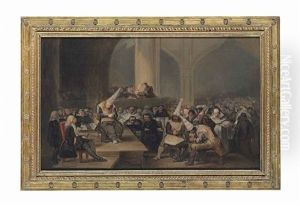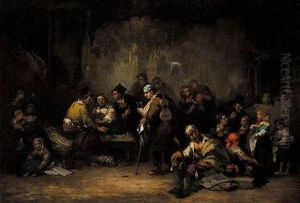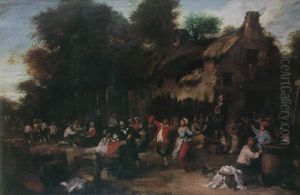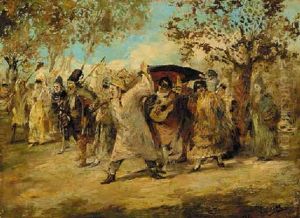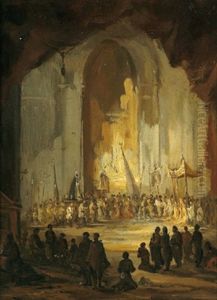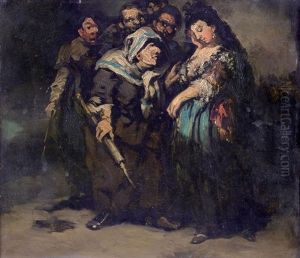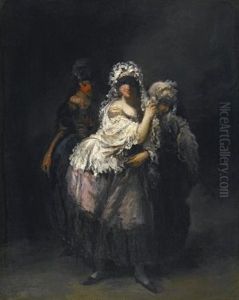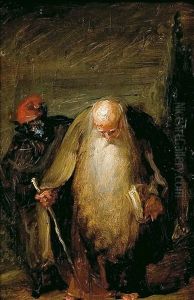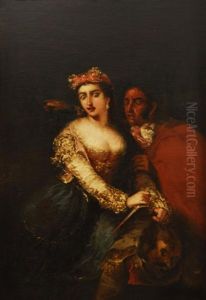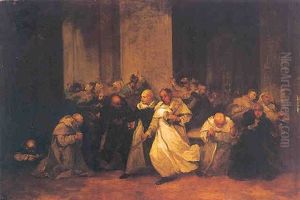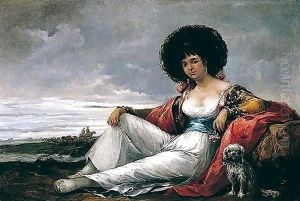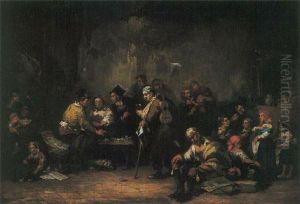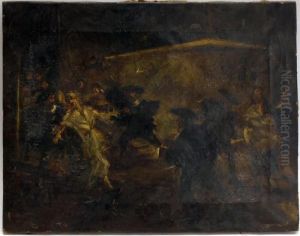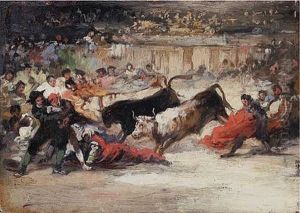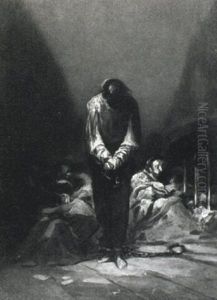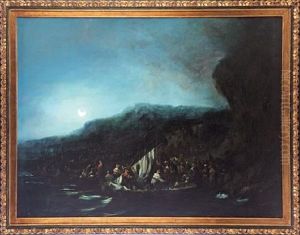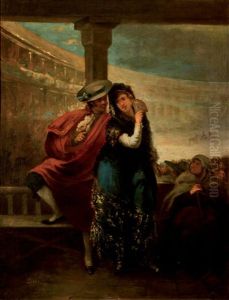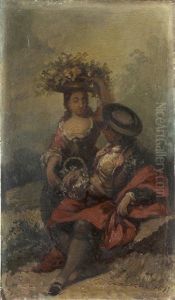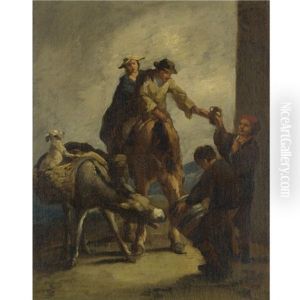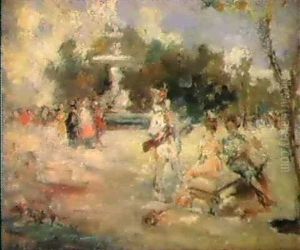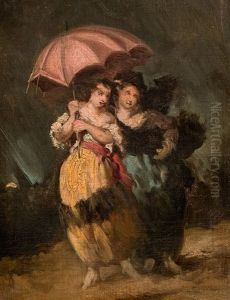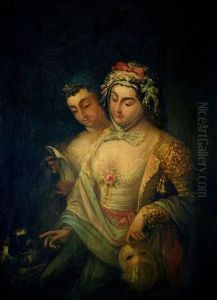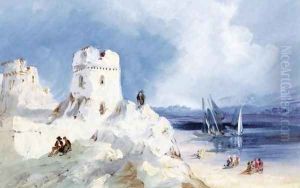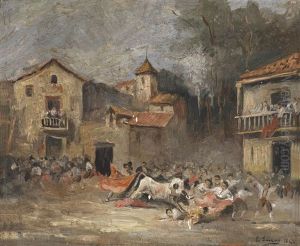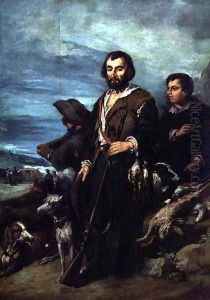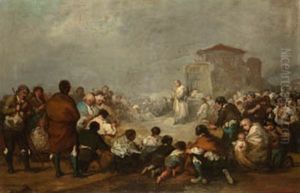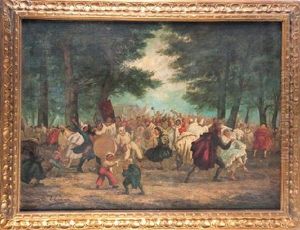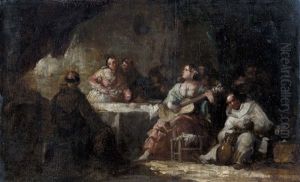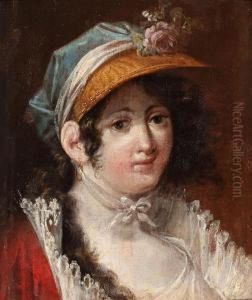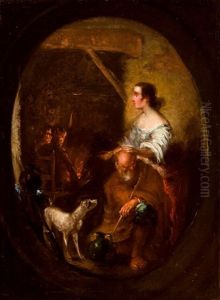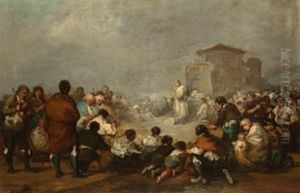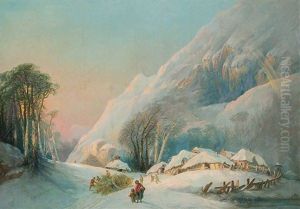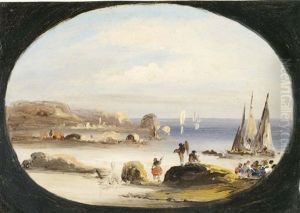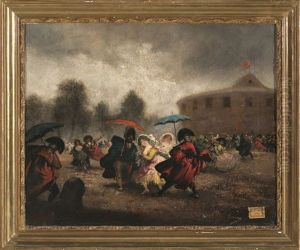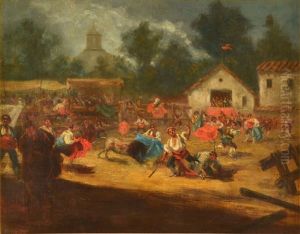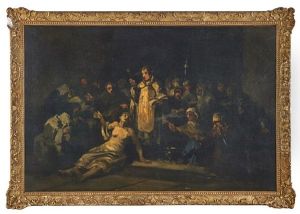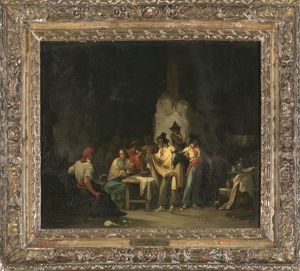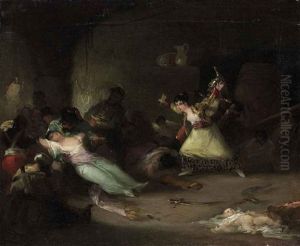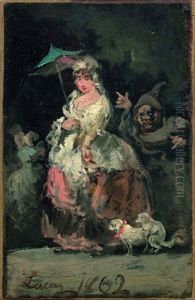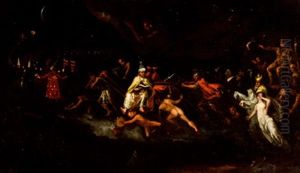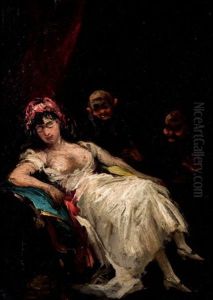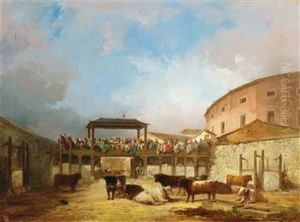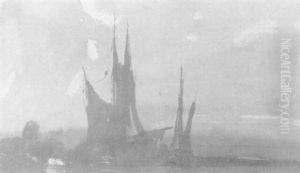Eugenio Lucas Velazquez Paintings
Eugenio Lucas Velázquez was a Spanish painter known for his work in the Romantic style, which was characterized by its emphasis on emotion, individualism, and the sublime. He was born on February 9, 1817, in Madrid, Spain, and is often considered one of the followers of Francisco Goya, the renowned Spanish romantic painter. Lucas Velázquez's works were heavily influenced by Goya, both in subject matter and style, and he is especially recognized for his paintings of bullfights, which were a popular theme in Spanish Romanticism.
Lucas Velázquez was largely self-taught, which gave his work a distinct personal touch. He began his career by copying works of famous artists, especially Goya, whose influence can be seen in Lucas Velázquez's use of brushwork and his exploration of similar themes such as witchcraft, popular festivities, and historical scenes. Despite the clear influence, Lucas Velázquez managed to develop his own style, characterized by a freer brushstroke and an intense use of color.
Throughout his career, he was well-regarded for his ability to capture the movement and atmosphere of the scenes he depicted. His works are notable for their dramatic expression and the sense of immediacy. Besides his paintings of bullfights, Lucas Velázquez also painted landscapes, portraits, and genre scenes. His work was appreciated for its vitality and the passionate way in which he portrayed subjects ranging from the macabre to the joyous.
Eugenio Lucas Velázquez's talent was recognized by his contemporaries, and he received various commissions from notable figures of his time, including members of the Spanish aristocracy. He also worked on restoring paintings at the Museo del Prado, which further indicates the level of respect he commanded in the art world.
Despite his success, Lucas Velázquez did not leave a significant school or following, and after his death on September 11, 1870, his work was somewhat overshadowed by other artists of the Romantic movement. Nevertheless, his paintings can be found in important collections, including the Prado Museum in Madrid and other institutions across Spain. His work continues to be studied and admired for its unique blend of Goyesque influence and personal expression.
